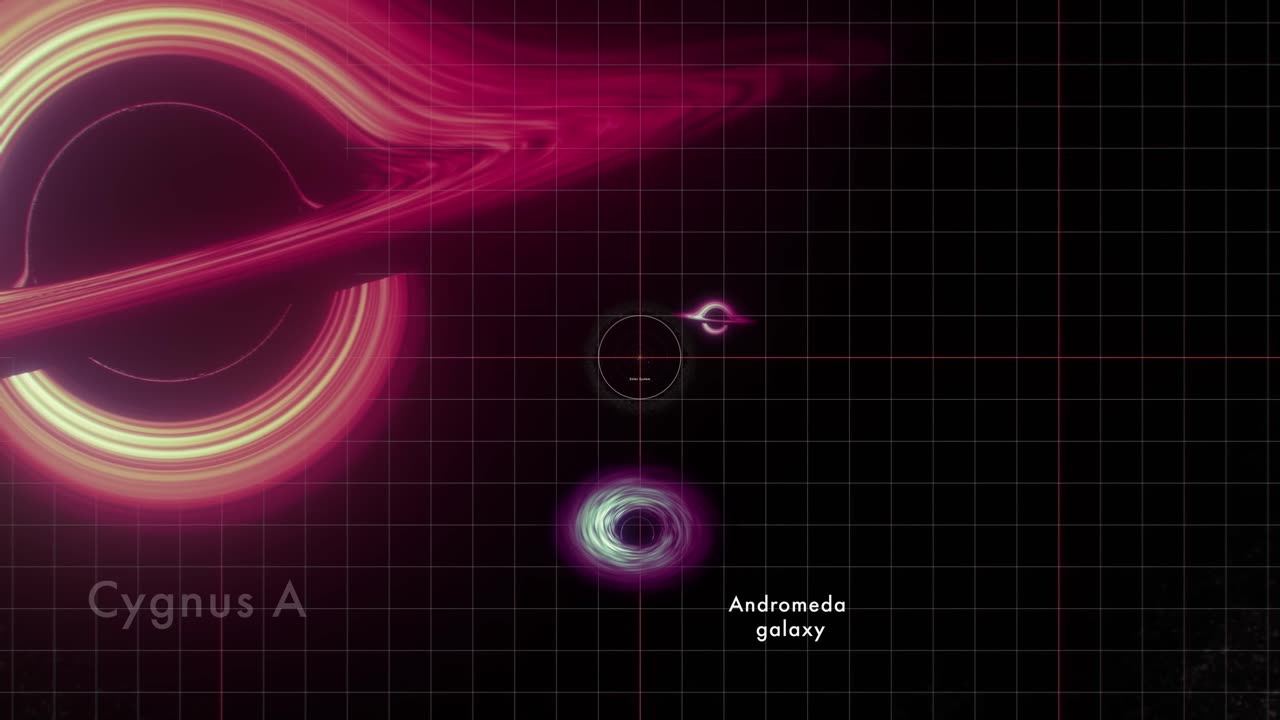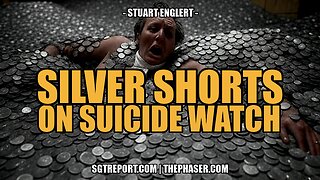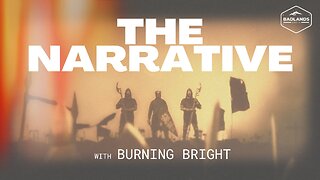Premium Only Content

NASA Animation Sizes Up the Biggest Black Holes
Editor's Note: A previous version of this video mislabeled the orbit of Saturn as the orbit of Jupiter.
This new NASA animation highlights the "super" in supermassive black holes. These monsters lurk in the centers of most big galaxies, including our own Milky Way, and contain between 100,000 and tens of billions of times more mass than our Sun,
Any light crossing the event horizon - the black hole's point of no retum - becomes trapped forever, and any light passing close to it is redirected by the black hole's intense gravity. Together, these effects produce a "shadow" about twice the size of the black hole's actual event horizon.
The animation shows 10 supersized black holes that occupy center stage in their host galaxies, including the Milky Way and M87, scaled by the sizes of their shadows Starting near the Sun, the camera steadily pulls back to compare ever-larger black holes to different structures in our solar system
First up is 1601+3113, a dwarf galaxy hosting a black hole packed with the mass of 100,000 Suns. The matter is so compressed that even the black hole's shadow is smaller than our Sun.
The black hole at the heart of our own galaxy, called Sagittarius A* (pronounced ay-star), boasts the weight of 4.3 million Suns based on long-term tracking of stars in orbit around it. It's shadow diameter spans about half that of Mercury's orbit in our solar system.
The animation shows two monster black holes in the galaxy known as NGC 7727. Located about 1,600 light-years apart, one weighs 6 million solar masses and the other more than 150 million Suns, Astronomers say the pair will merge within the next 250 million years.
At the animation's larger scale lies M87's black hole, now with a updated mass of 5.4 billion Suns. Its shadow is so big that even a beam of light-traveling at 670 million mph (1 billion kph) - would take about two and a half days to cross it.
The movie ends with TON 618, one of a handful of extremely distant and massive black holes for which astronomers have direct measurements. This behemoth contains more than 60 billion solar masses, and it boasts a shadow so large that a beam of light would take weeks to traverse it.
Music credit: "In the Stars' from Universal Production Music
Credit: NASA's Goddard Space Flight Center Conceptual Image
Lab
Lead Producer: Scott Wiessinger (KBRwyle) Lead Animator: Krystofer Kim (KBRwyle) Lead Science writer: Francis Reddy (University of Maryland
College Park) Visualizer: Jeremy Schnittman (NASA/GSFC)
Producer: Sophia Roberts (AIMM)
Scientist Jeremy Schnittman (NASA/GSFC)
-
 50:34
50:34
SGT Report
12 hours agoSILVER SHORTS ON SUICIDE WATCH -- Stuart Englert
10.9K7 -
 1:31:45
1:31:45
Chicks On The Right
4 hours agoCharlie's Memorial: highlights, the lead-up, the crowds, and the speech that broke the internet.
18.4K6 -
 LIVE
LIVE
LFA TV
13 hours agoLFA TV ALL DAY STREAM ! | MONDAY 9/22/25
3,520 watching -
 1:09:12
1:09:12
JULIE GREEN MINISTRIES
3 hours agoLIVE WITH JULIE
80.7K156 -
 4:01:24
4:01:24
The Bubba Army
3 days ago90K Honor Charlie Kirk At Memorial - Bubba the Love Sponge® Show | 9/22/25
49.3K14 -
 38:21
38:21
Stephen Gardner
2 days ago🔥Is Kash Patel HIDING DETAILS About Charlie Kirk & Jeffrey Epstein? Judge Joe Brown
89.4K208 -
 26:33
26:33
DeVory Darkins
1 day ago $62.52 earnedRep Omar EMBARRASSES herself in a painful way as Newsom PANICS over Kamala confrontation
120K347 -
 3:28:14
3:28:14
Badlands Media
1 day agoThe Narrative Ep. 39: The Sovereign Mind
147K44 -
 2:17:35
2:17:35
TheSaltyCracker
14 hours agoThe Charlie Kirk Effect ReeEEStream 9-21-25
166K421 -
 2:03:07
2:03:07
vivafrei
14 hours agoEp. 283: Charlie Kirk Memorial and other Stuff in the Law World
261K243